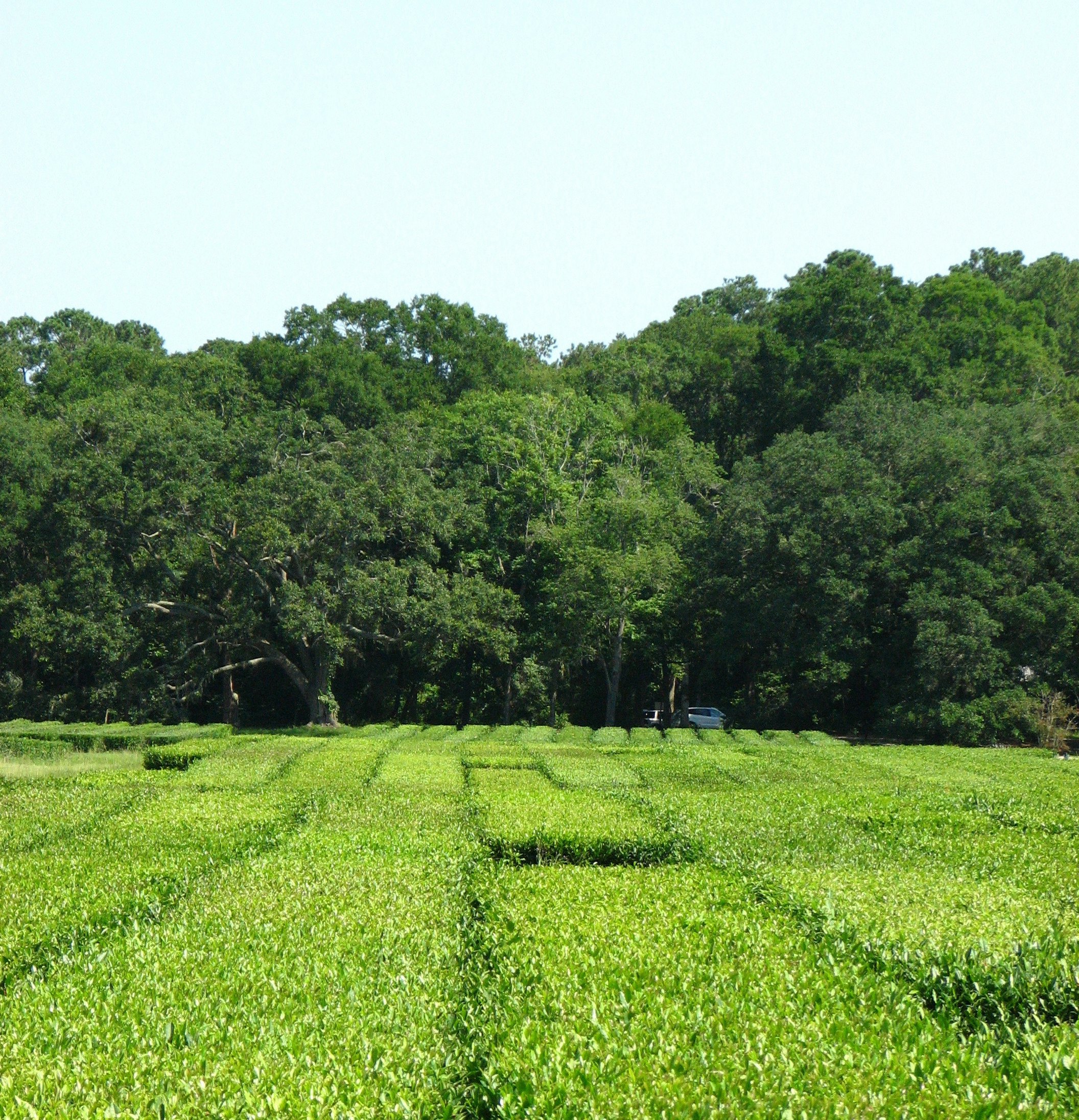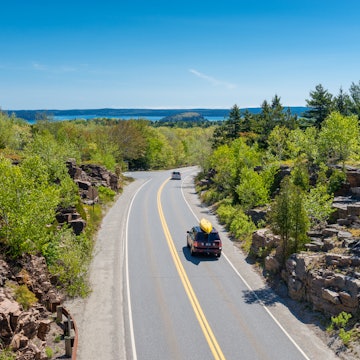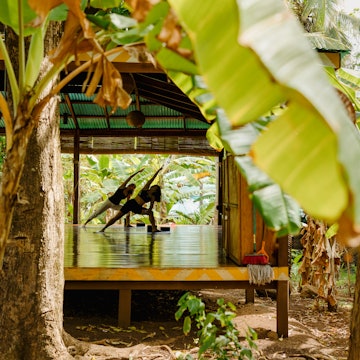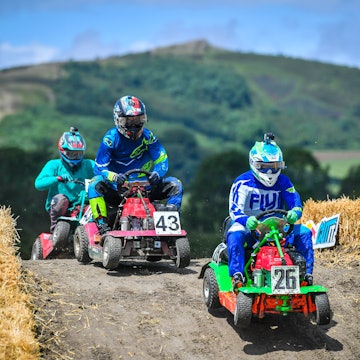

Folly Beach's six miles of shoreline are the perfect setting for a day in the sun © Margaret.Wiktor / Shutterstock
You don’t need to dole out much cash to experience the best of South Carolina. There are so many possibilities, from hanging out on a golden beach (or three) to uncovering Gullah heritage to helping rescue baby oysters.
You could also explore the nation’s only large-scale tea plantation, gaze at record-breaking trees or check out the latest BMW model. Whatever your interest, there are plenty of fun things to see and do for free in South Carolina.
Here are some of the best.

1. Soak in the rays at Folly Beach
Folly Beach is a quirky beach town near Charleston bustling with surfers, students and beach bums. Six miles of shoreline include the Washout – a surf break beloved by surfers – and, at the far west end, a scenic county park with a tranquil swimming beach and a pelican rookery.
But perhaps the coolest thing about Folly is that you can enjoy both sunrises and sunsets over the water, thanks to its perch between the Atlantic Ocean on one side and the Folly River on the other. A 1045ft pier extends far out into the Atlantic, where anglers try their luck in the water below.
Of course, with 187 miles of shoreline (and 2876 miles of tidal coastline), South Carolina has plenty of other beaches, including bustling Myrtle Beach at the state’s northern end, with 60 miles of breezy coastline; Surfside Beach, offering easy accessibility for the physically impaired; Daufuskie Island’s secluded Bloody Point Beach, a snippet of sand full of natural beauty and heavenly solitude; and so many more.
2. Celebrate Gullah-Geechee heritage on the Sea Islands
For hundreds of years, the Gullah people – descendants of enslaved people who worked on southern rice plantations – have lived on South Carolina’s Sea Islands (Georgia’s, too). They’ve preserved their West African legacy through fishing and farming traditions, food (rice is a staple), music and spirituality.
Residents live in small fishing and farming villages and speak a creole language similar to Sierra Leone Krio. While some sights open to the public require an admission fee, there are ways to experience the Gullah culture for free.
The small Gullah Museum in Georgetown shares the history through exhibits and crafts. The Penn Center on St Helena Island preserves Gullah history, as does the Daufuskie Island Historical Foundation Museum on this tiny island filled with Gullah houses (accessible only by ferry).
It doesn't cost anything to browse arts and crafts galleries showcasing Gullah works, including LyBensons' Gallery and Studio in Beaufort, Gallery Chuma in Charleston and the Sonja Griffin Evans Gallery in Bluffton (though you may be tempted to purchase a beautiful work of art).
Beaufort’s Original Gullah Festival takes place on Memorial Day weekend. The festival celebrates Gullah roots with dancing, African drums, storytelling, reggae, jazz, a vendor market and a food court filled with Gullah specialties like okra, crab rice and one-pot rice dishes.
And, of course, you’ll find the works of well-known Gullah artists at the Charleston City Market. Enjoy chatting with the talented makers of the intricate sweetgrass baskets (and don’t blame us for the temptation to buy something).
Help save oysters (and sinking shorelines) in the Lowcountry
South Carolina’s Lowcountry is sinking. The water level today is 10 inches higher than in 1950 and has been speeding up to about one inch every two years. One group is fighting against this environmental travesty, and you can help – by volunteering to build oyster shell reefs.
With DNR’s South Carolina Oyster Restoration & Enhancement (SCORE), join in on a fun morning of stacking sacks of spent oyster shells along the shoreline. This way, oyster spats (babies) can attach to the gooey pluff mud to grow and develop.
Oyster spats are a crucial resource in South Carolina's Lowlands, filtering water so that more than 300 species of sea creatures may flourish, directly or indirectly. These oyster reefs stabilize the marsh-based shorelines – the best-proven solution to rebuild them, in effect reversing the projected sea rise taking place.
To date, 400 reefs on 44 different sites have been constructed in South Carolina since May 2001, spanning 200 miles of coast from Murrell’s Inlet to Hilton Head. Daufuskie Island is one of the most scenic spots and gives visitors a chance to take a peek at this remote isle.

Gaze at tall trees at Congaree National Park
Not all national parks need to be big to be amazing. Congaree National Park, just 20 miles south of the state capital, measures a slight 22,000 acres. Along the dark and winding Congaree River, you’ll discover the continent’s largest remnant of old-growth bottomland hardwood forest.
Champion loblolly pines, bald cypresses and water tupelo trees tower above the river, graced with ghostly Spanish moss and intertwined with walking trails.
The park’s rangers lead various tours, including an “owl prowl” in fall and spring, seeking barred owls (and seeing glowing fungus that grows on the bald cypresses). Bobcats, deer and river otters are other common sightings.
Go kayaking and canoeing (bring your own boat or rent in Columbia), fishing, birdwatching or camping (there’s a small fee). The best – and free – way to get into the heart of it all is by foot, with eight trails to choose from.
The 2.5-mile Boardwalk Trail, for example, ambles along an elevated platform through the old-growth hardwood forest; grab a handout at the visitor center for pointers on what you’re seeing. The 11.7-mile Kingsnake Trail is a favorite among birders, while the 10.4-mile River Trail ambles along the Congaree River, the domain of turkeys and deer.
Stop and smell the flowers at Clemson’s Botanical Garden
On a steamy summer day, South Carolina Botanical Garden beckons with miles of shady trails and pathways through flower-filled gardens and cool woodlands.
Located on the campus of Clemson University, the 295-acre sanctuary also has a hosta display garden, a 70-acre arboretum, winding streams, and plenty of nooks and crannies to find peace and quiet.
But the most fascinating thing about the garden is its array of nature-based sculptures – one of the nation's largest collections. International artists designed each sculpture on the spot (ask for a map at the kiosk near the Cadet Life Garden and the Fran Hanson Visitor's Center).
You’ll also find the historic Hanover House here, representing 18th-century life in the Lowcountry, and a pioneer village showcasing the Hunt Log Cabin, dating from 1825.

Sip tea at the nation’s largest tea garden
Who knew tea could be so interesting? America’s only large-scale tea garden, Charleston Tea Garden, sits on a secluded island near Charleston. The garden offers a chance to learn about the history of American tea, though taking in the beauty of the tea fields and sampling freshly brewed tea are just as fun.
American tea dates back to the country’s earliest days when French botanist André Michaux presented the Camelia sinensis plant to Charleston local Henry Middleton. The plant flourished in the Lowcountry, though most endeavors to commercially distribute the tea failed.
Then along came Dr. Charles Shepard, who founded the Pinehurst Tea Plantation in his attempt to make tea profitable. And thus, it did – of course, thanks to the bevy of enslaved people forced to work the fields. Upon his death in 1915, Shepard’s tea plants were transformed into a small tea farm on Wadmalaw Island. F
inally, in 1987, William Barclay Hall entered the picture: a third-generation tea taster with formal training in London, England.
Hall created the “American Classic Tea,” the only tea mass-produced 100% in the US. He formed a partnership with the Bigelow family in 2003, and the plantation has become a tea lover’s destination ever since.
You can also take tours; the free factory tour shows how tea is made, while the trolley tour (which costs $10 for adults and $5 for children) showcases the tea fields. Pack a lunch and make a day of it.
Admire fancy cars at the BMW Zentrum Museum
Of course, BMWs are one of Germany’s pride and joys, but you can learn how these luxury cars are made – and see some of the rarest models – right in Greer (near Greenville) at North America’s only BMW museum.
A self-guided tour tracks BMW’s various milestones since the company’s earliest days, originating in 1916 as Bayerische Flugzeug-Werke, an aircraft engine manufacturer.
The company donned the name Bayerische Motoren Werke (BMW) in July 1917 and entered the motorcycle business in the 1920s before finally producing its first cars in 1928. Their first 328 sports car was not created until 1936.
The tour will guide you to the present day, including the story behind the powerhouse X family, all made for the global market at the plant next door.
The factory produces 1500 cars every day and exports to 120 countries. If you want to peek inside the plant, you’ll have to pay a small fee.
Weigh in on the Shoeless Joe Jackson controversy in Greenville
In Greenville’s West End is Fluor Field, home of the Greenville Drive baseball team. You’ll want to catch a game while in town (for a fee, of course) and explore the modest home across the street (which is free).
The Shoeless Joe Jackson Museum and Baseball Library once belonged to one of America’s greatest baseball legends, Joe Jackson. He’s also one of the most controversial. This museum chronicles that controversy and his life.
Poor and illiterate, Jackson worked in a local textile mill starting at age six before eventually playing textile league ball on the side. He rocketed to baseball greatness with the White Sox, though, at the height of his career, he was accused of throwing the 1919 World Series and was forever barred from the game.
The museum is filled with artifacts, photographs and newspaper clippings that argue in favor of his innocence. Whatever the case, Jackson still holds the third-highest batting average in the history of Major League Baseball (.356).
















